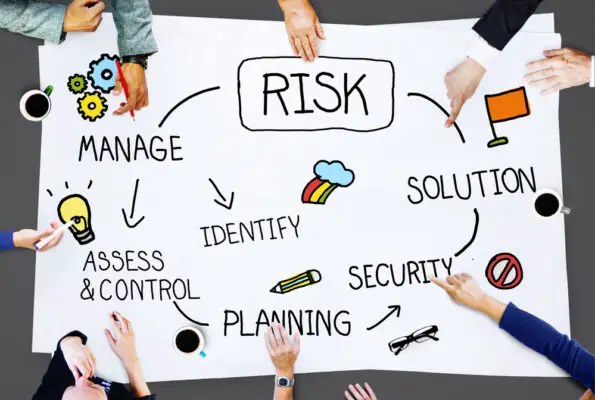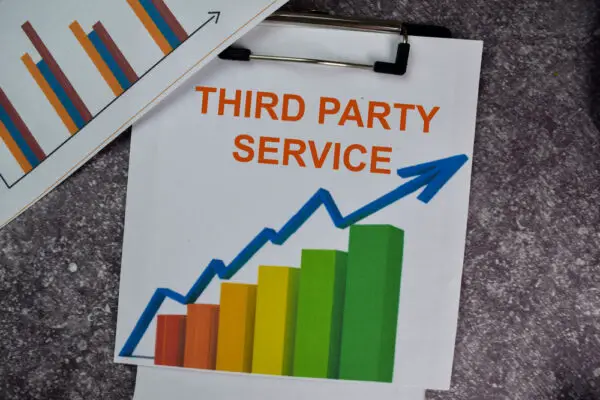Risk assessments should be carried out at specific trigger points to guarantee workplace safety and mitigate potential hazards effectively.
The Environmental Protection Agency (EPA) plays a crucial role in setting standards and guidelines for assessing hazards related to humans and the environment, highlighting its importance in conducting risk assessments for workplace safety.
These assessments are vital when there are changes in the work environment, the introduction of new equipment, or whenever incidents occur.
Identifying risks promptly is important for implementing control measures to prevent accidents and create a secure work setting. Understanding when to conduct risk assessments enables proactive risk management and safeguards individuals from harm.

By conducting assessments at the right times, organizations can maintain a safe work environment and protect their employees from potential dangers. Find more insights on risk assessment triggers and processes.
Key Takeaways
- Conduct risk assessments before starting new tasks or projects.
- Regularly review and update risk assessments when conditions change.
- Perform risk assessments when introducing new hazards or equipment.
- Prioritize risk assessments after incidents, near misses, or accidents.
- Include risk assessments in planning stages and before implementing changes.
Trigger for Risk Assessments
When considering the triggers for risk assessments, it is essential to understand why they are important, how a risk assessment matrix can be utilized, the difference between quantitative risk assessment and qualitative risk analysis approaches, and the five key steps step by step process involved in the risk assessment process.
These points provide a framework for organizations to effectively identify, evaluate, and address potential risks in the workplace.
By recognizing the significance of triggers for risk assessments and following a structured approach, businesses can proactively manage risks to safeguard their employees and operations.
Why is it Important?
Conducting timely risk assessments is important for proactively identifying and mitigating potential hazards in the workplace to safeguard the safety and well-being of individuals. Risk assessments play a significant role in ensuring workplace safety by helping organizations identify and evaluate hazards beforehand, mitigate potential risks, and prevent injuries and accidents.
Additionally, regular risk assessments are essential to maintain compliance with health and safety regulations, especially when introducing new activities, processes, or personnel.
Changes in work environments or activities also necessitate thorough risk assessments to uphold safety standards and prevent incidents or property damage.
How to use a risk assessment matrix
To effectively prioritize and manage risks in the workplace, utilizing a risk assessment matrix is a strategic approach that provides a visual representation of risks based on severity and likelihood.
This matrix categorizes risks into low, medium, and high-risk levels, aiding in decision-making and highlighting critical areas needing immediate attention and control measures.
By using a risk assessment matrix, organizations can efficiently identify and prioritize risks, ensuring that resources are allocated to address high-risk areas promptly.
The visual representation of risks allows for a clearer understanding of the potential impact of each potential risk alone, facilitating a more informed approach to risk management.
Ultimately, the use of a risk assessment matrix enhances the overall efficiency and effectiveness of the risk assessment process.
Quantitative vs. qualitative
Quantitative and qualitative risk analysis approaches play distinct roles in risk assessment templates, assessments, and risk analysis measures with each method offering unique insights into the evaluation and management of potential risks.
Quantitative risk assessments involve a quantitative risk assessment through the use of numerical data and measurements to assess risk levels.

5 steps in the risk assessment process
Initiating a risk assessment is crucial when uncertainties exist regarding potential hazards or risks in the workplace. To make risk assessment steps guarantee a thorough risk assessment process, the following risk assessment steps should be considered:
- Identify specific hazards or risks that need evaluation.
- Assess the level of uncertainty surrounding these workplace risks.
- Implement control measures to mitigate potential hazards effectively.
- Regularly review risk assessments, especially when known hazards have established control measures that require reassessment.
Importance of Hazard Understanding
Understanding hazards in the workplace is crucial for evaluating potential risks and implementing effective control measures.
By using existing processes and identifying hazards through various methods, organizations can develop strategies to mitigate risks and predict potential outcomes.
Evaluating control measures based on a full assessment team and thorough understanding of hazards guarantees the creation of a safe and secure work environment.
Hazard Identification Methods
Effective hazard identification methods are essential for recognizing potential risks in the workplace and are key to evaluating the severity and likelihood of occurrences.
Various techniques play an important role in identifying hazards and enhancing workplace safety:
- Workplace inspections: Regular checks help in identifying potential hazards and evaluating their impact on safety.
- Job safety analysis: Systematically evaluating job tasks to pinpoint potential risks and implement preventive measures.
- Employee feedback: Involving employees in hazard identification processes to gather insights from those directly involved in the tasks.
- Control measures and risk management: Implementing effective control measures based on identified hazards to mitigate risks and maintain a safe work environment.
These methods collectively contribute to accident prevention and the overall well-being of individuals in the workplace.
Risk Mitigation Strategies
Prior knowledge of potential hazards is fundamental for formulating successful risk mitigation strategies in the workplace. Understanding hazards allows for the identification of potential risks, enabling proactive measures to prevent harm.
This comprehension of hazards also aids in developing appropriate control measures to minimize the likelihood of workplace accidents and injuries.
Without a risk manager and a solid grasp of potential risks, there is a risk of less informed decisions lacking risk value and hazard awareness, which can have detrimental consequences.
Proper hazard assessment is key to creating a safe work environment that prioritizes the well-being of individuals.
By implementing effective risk mitigation strategies based on a thorough understanding of hazards, organizations can greatly reduce the likelihood of incidents and promote a culture of safety and awareness in the workplace.
Outcome Prediction Techniques
To devise thorough enough risk analysis and mitigation strategies in the workplace, a deep understanding of potential hazards is essential for anticipating and preparing for potential outcomes through outcome prediction techniques.
Utilizing outcome prediction techniques allows organizations to predict potential harm scenarios and foresee outcomes of hazards and risks, enhancing risk mitigation strategies.
By understanding potential outcomes, organizations can implement effective control measures in risk assessments, ensuring workplace safety.
These techniques not only aid in identifying possible risks but also help in creating proactive safety measures to mitigate these risks effectively. Incorporating outcome prediction techniques into risk assessments is fundamental for preemptively addressing hazards and ensuring a safe working environment for all individuals and stakeholders involved.
Control Measure Evaluation
Understanding hazards is paramount in the evaluation of control measures to guarantee workplace safety and effective risk mitigation strategies. Accurate risk assessments hinge on a clear comprehension of potential risks, enabling the selection of appropriate controls tailored to specific hazards.
By evaluating hazards thoroughly, organizations can implement targeted and efficient control strategies.
Hazard understanding plays a pivotal role in the success of risk assessment processes, allowing for the identification of potential risks and the selection of controls that best address these risks.
Efficient controls depend on the depth of hazard evaluation, which in turn guarantees the implementation of effective measures to mitigate risks effectively.
Hence, a thorough understanding of hazards is essential for selecting the most suitable controls to safeguard individuals in the workplace.
Impact of Compound Risks
Compound risks in the workplace refer to scenarios where multiple hazards interact, potentially amplifying the overall risk level.
Understanding the effects of risk interactions is essential for effective risk management strategies.
Compound Risk Scenarios
Interactions between multiple hazards within a workplace environment can greatly elevate the overall risk level, emphasizing the importance of considering compound risk scenarios in thorough risk assessments.
Understanding the dynamics of compound risk scenarios is essential for a thorough risk assessment process. When different hazards interact, they can create a more severe risk level than when considered individually.
Factors and events combined to form compound risks need to be carefully identified to develop effective control measures.
Failure to address compound risk scenarios can amplify the risk exposure within a workplace, potentially leading to hazardous situations.
Hence, organizations must proactively assess and manage compound risks to ensure a safe working environment for all individuals involved.
- Compound risk scenarios involve multiple hazards interacting.
- Interaction between hazards can amplify the overall risk level.
- Compound risks may result from the combination of different factors or events.
- Identifying compound risks is important for developing effective control measures.
Risk Interaction Effects
When multiple risks converge, their collective impact can greatly escalate the overall level of danger and complexity in a given environment. This phenomenon, known as risk interaction effects, occurs when different hazards interact, amplifying the overall risk level beyond the individual risks.
Understanding how multiple risks in different industries can compound each other’s impact is vital for effective risk assessment and implementing appropriate control measures. Failure to address these compound risks can result in more severe consequences.
Hence, taking a thorough approach to assess and mitigate compound risks is essential in ensuring the safety and well-being of individuals in the workplace.
Organizations must be proactive in identifying and managing these interactions to prevent potential safety hazards from reaching critical levels.
Mitigating Combined Hazards
To effectively guarantee workplace health and safety risks and mitigate potential hazards, organizations must proactively address the impact of combined hazards arising from the interaction of multiple risks.
- Identify Hazards: Thoroughly assess all potential risks in the workplace to pinpoint where hazards may combine.
- Evaluate Impact: Understand how these combined hazards can exacerbate each other and the overall danger they pose.
- Comprehensive Control Measures: Implement tailored controls that address the interconnected nature of these compound risks.
- Risk Control: Develop strategies to manage and reduce the likelihood and severity of combined hazards to enhance workplace safety and prevent underestimating the danger present.
Necessity for Control Measures
Control measures play an essential role in mitigating risks identified through risk assessments. These measures are vital in reducing the probability and impact of harm within the workplace.

Control Measure Importance
The significance of implementing adequate measures to safeguard against potential risks and hazards identified through thorough assessments cannot be overstated in fostering a secure and healthy work environment.
Importance of Control Measures:
- Prevent Risks: Control measures are vital in preventing risks identified in assessments.
- Safer Work Environment: Implementing control measures guarantees a safer work environment for employees.
- Protect Individuals: Control measures help mitigate potential harm and protect individuals from hazards.
- Compliance: Control measures are essential for complying with health and safety regulations and standards.
Risk Mitigation Strategies
Mitigating risks effectively demands the implementation of precise measures tailored to address identified hazards and enhance workplace safety. Control measures play an essential role in risk and mitigation strategy by reducing the likelihood of accidents, injuries, and property damage in the workplace.
These measures are designed to prevent harm by addressing specific hazards that have been identified through risk assessments.
Regularly reviewing and updating control measures is vital for ongoing risk management to guarantee their continued effectiveness.
By consistently monitoring and adjusting these measures, organizations can proactively safeguard their employees and assets, fostering a culture of safety and preparedness. Prioritizing the implementation of control measures is fundamental to creating a secure work environment and preventing potential risks from materializing.
Ensuring Workplace Safety
To maintain a safe work environment, conducting risk assessments before initiating new workplace activities is essential for both identifying threats and addressing potential hazards effectively. Guaranteeing workplace safety involves the following key practices:
- Identify Potential Hazards: Thoroughly assess the work environment to pinpoint any potential risks or dangers.
- Mitigate Potential Hazards: Take proactive measures to eliminate or reduce the identified hazards to enhance safety levels.
- Regular Reviews: Conduct periodic reviews of risk assessments to assure continued compliance with regulations and address any emerging risks.
- Worker Involvement: Involve employees in the risk assessment process to enhance hazard recognition and promote a culture of safety in the workplace.
Frequently Asked Questions
When Should Risk Assessment Be Done?
Risk assessments are vital when uncertainties, compound risks, or lack of outcomes understanding exist. Conducting assessments aids the safety managers in identifying and mitigating potential risks in the workplace. Regular reviews, and risk assessment templates especially during new tasks, changes, personnel shifts, or incidents, guarantee ongoing safety.
When Should a Full Risk Assessment Be Carried Out?
When conducting a full risk assessment, it is imperative to take into account all potential hazards possible threats, uncertainties, and existing control measures to guarantee thorough safety measures. This proactive approach safeguards individuals and promotes a secure work environment.
When Should a Risk Assessment Be Carried Out in Care?
Risk assessments in care settings are essential when introducing new elements of health administration, altering work practices, or facing staff turnover. Vulnerable populations demand regular assessments for their safety. Compliance with regulations necessitates ongoing evaluations to guarantee a healthy environment for all.
When Must a Risk Assessment Be Carried Out in the Workplace?
Risk assessments in the workplace must be conducted to identify and mitigate potential hazards, guarantee safety, and comply with legal requirements. They are essential when uncertainties, changing conditions, or new activities pose risks to employees’ health and well-being.

Conclusion
The strategic implementation of risk assessments and safety management plan is vital in maintaining workplace safety and mitigating potential hazards.
By conducting thorough assessments of key business initiatives, organizations can identify and address risks, especially in scenarios where risk manager is with limited knowledge or ambiguity.
This proactive approach not only guarantees the well-being of individuals in the workplace but also strengthens occupational safety and protocols and fosters

Chris Ekai is a Risk Management expert with over 10 years of experience in the field. He has a Master’s(MSc) degree in Risk Management from University of Portsmouth and is a CPA and Finance professional. He currently works as a Content Manager at Risk Publishing, writing about Enterprise Risk Management, Business Continuity Management and Project Management.

